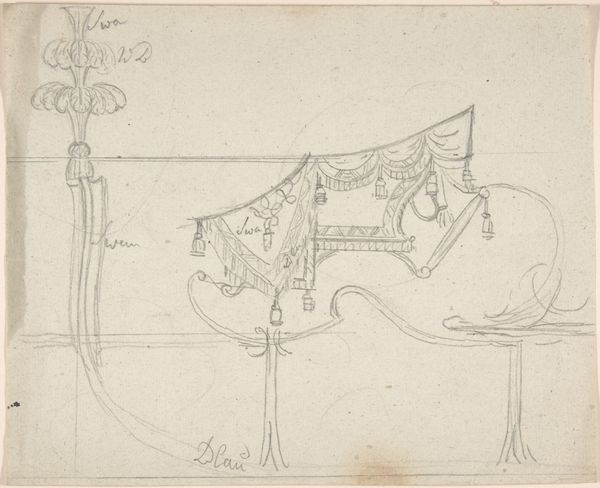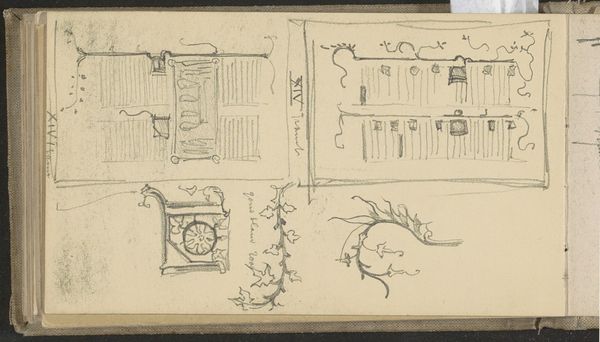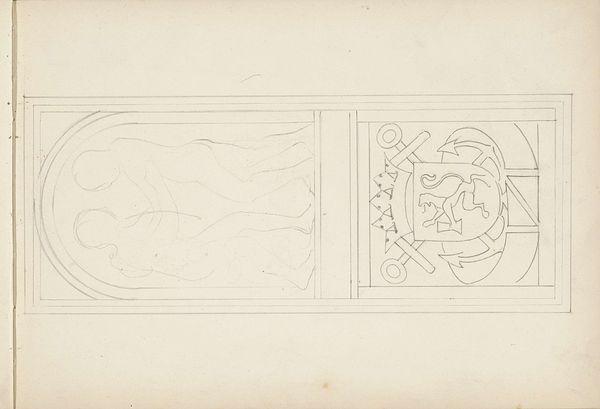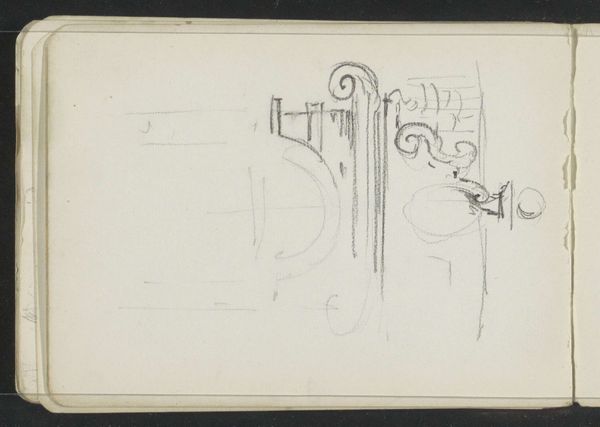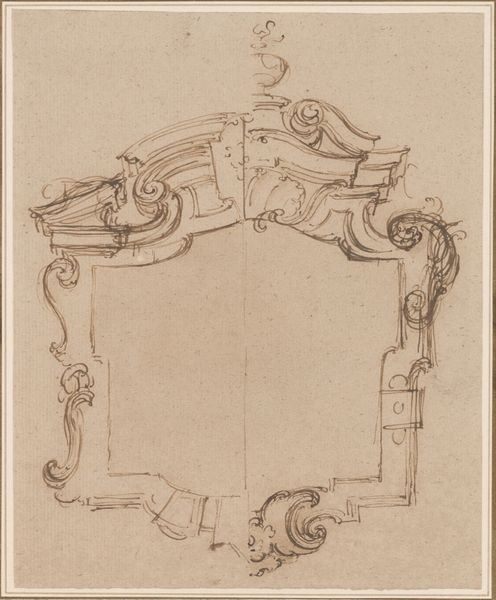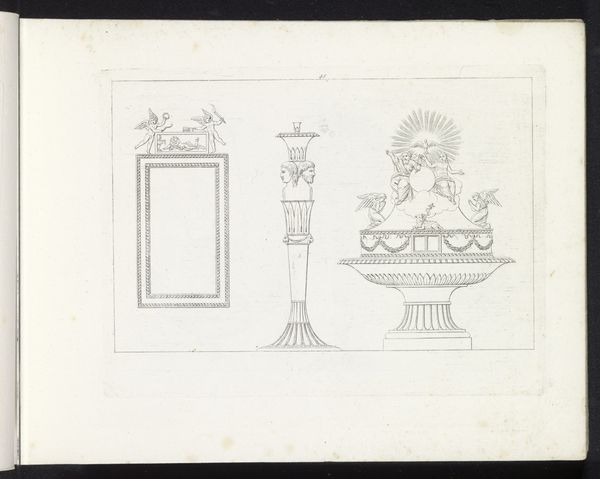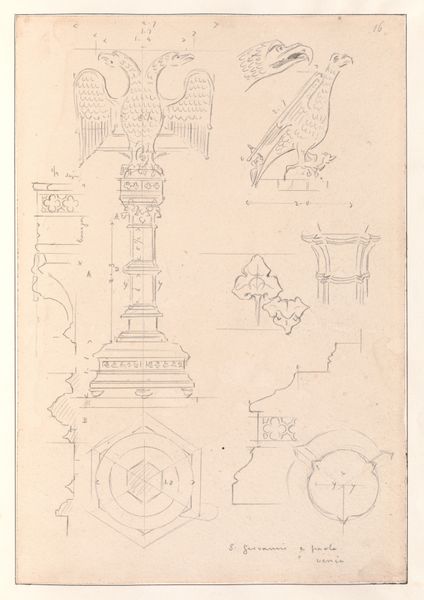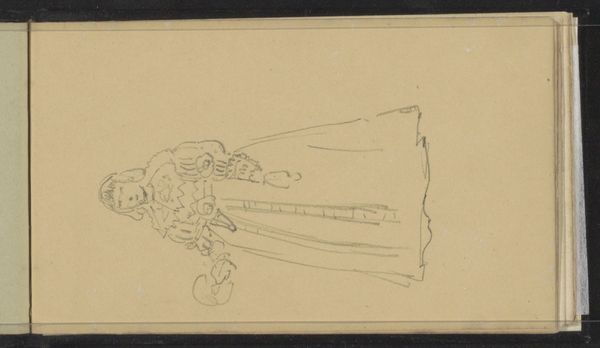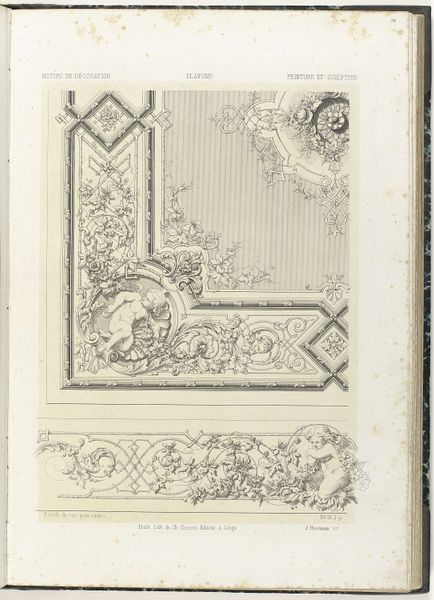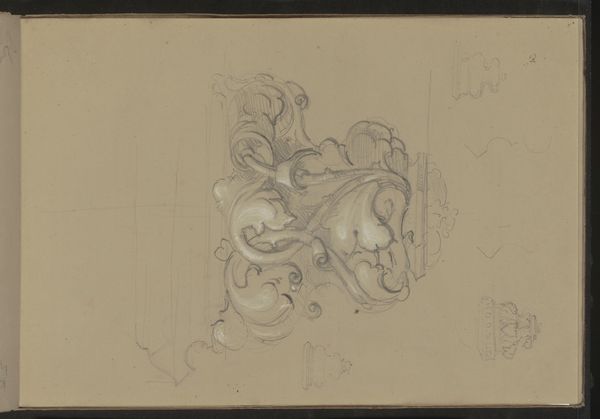
drawing, paper, pencil
#
drawing
#
imaginative character sketch
#
quirky sketch
#
sketch book
#
paper
#
personal sketchbook
#
idea generation sketch
#
sketchwork
#
ink drawing experimentation
#
geometric
#
sketch
#
pencil
#
symbolism
#
sketchbook drawing
#
storyboard and sketchbook work
#
sketchbook art
Copyright: Rijks Museum: Open Domain
Editor: Here we have Antoon Derkinderen's study, "Wapen van het Koninkrijk der Nederlanden," from the late 19th century. It's a pencil drawing on paper, and seeing it here in the artist's sketchbook really highlights its raw, almost playful character. What strikes you about this sketch, especially considering its subject matter—the Dutch coat of arms? Curator: Well, what immediately grabs me is the inherent tension between the symbolic weight of a national emblem and the informal nature of a sketchbook drawing. The coat of arms is inherently about power, lineage, and national identity. But here, Derkinderen seems to be dissecting it, exploring its constituent parts rather than presenting a unified, authoritative image. We see elements of the heraldic imagery, like the lion, almost playfully rendered. It makes me wonder about the function of art for the public and, equally, its development through this more intimate artistic process. What do you think he's doing by breaking it down like this? Editor: I guess I see it as a kind of deconstruction. Instead of just accepting the traditional symbolism, he’s almost taking it apart to understand how it works visually. Maybe to consider, what do those symbols really represent in the current moment? Curator: Precisely. He's engaging with the visual language of power. The late 19th century was a period of significant social and political change. Symbolism, as a movement, was interested in the deeper meanings of images. Was Derkinderen commenting on the relevancy of these older symbols in a rapidly modernizing nation? Or was he perhaps, thinking of re-staging that symbology? This kind of deconstruction can open doors for political conversations around art. Do you feel it achieves its goals? Editor: It does make me think about the relevance of national symbols and how they’re constantly being reinterpreted. I initially just saw a preliminary sketch, but knowing its history, I now see that it poses very important questions. Curator: It prompts us to reflect on the public role of art and the very politics of imagery in shaping our perceptions of nationhood, history and collective identity. I am taking notes! Thanks!
Comments
No comments
Be the first to comment and join the conversation on the ultimate creative platform.
